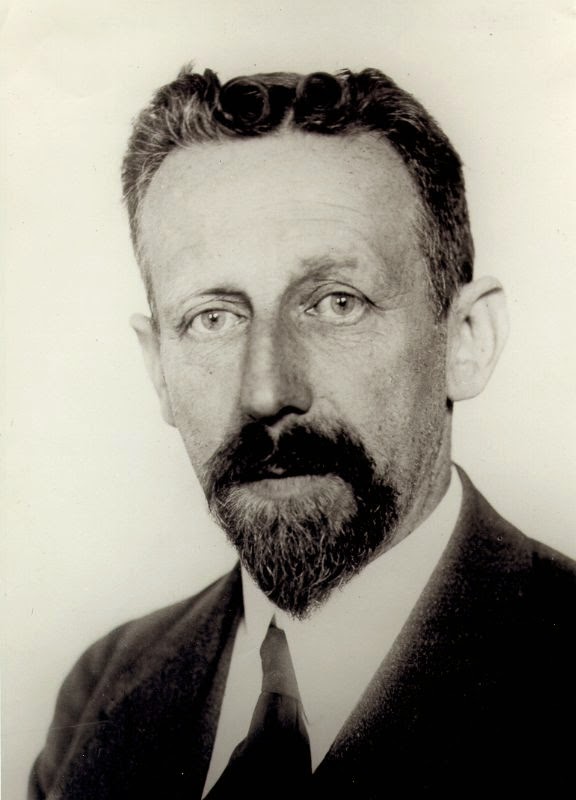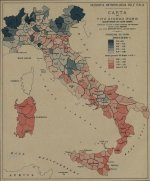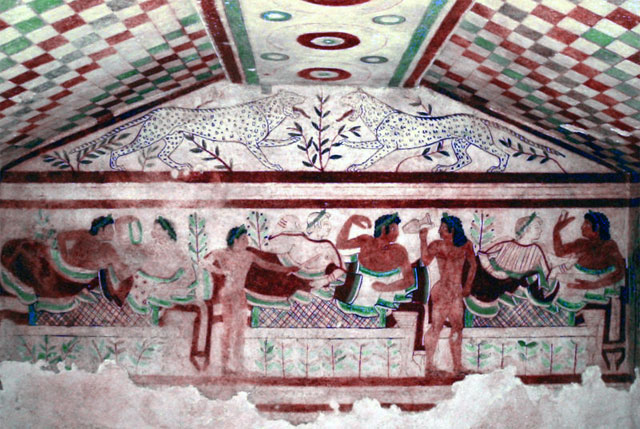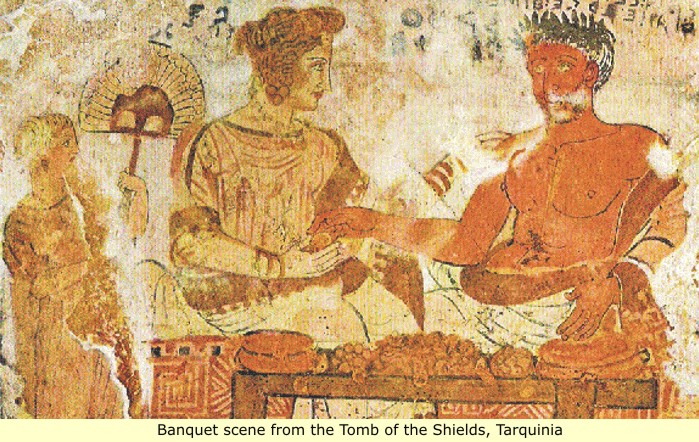Vallicanus
Regular Member
- Messages
- 1,196
- Reaction score
- 466
- Points
- 83
- Y-DNA haplogroup
- R1b Z36
He claims to use only local surnames in searching out photos.
Follow along with the video below to see how to install our site as a web app on your home screen.

Note: This feature currently requires accessing the site using the built-in Safari browser.
He claims to use only local surnames in searching out photos.
I've always thought that a pretty good way to get an idea of the way people "used to" look in specific areas of Italy is to google something like "corteo storico" and add the name of a small town. As here:
He can claim what he wants. I highly doubt that a French knows really the local surnames of every Italian region. But assuming that what he claims is true, it means nothing. A local surname doesn't imply that your ancestry is fully from there.
He can claim what he wants. I highly doubt that a French knows really the local surnames of every Italian region. But assuming that what he claims is true, it means nothing. A local surname doesn't imply that your ancestry is fully from there.
Yes, but considering that also in a small town there have been migrations. Btw in these pics through the google search there are clearly some foreigners like those of Mercanzia.
It's not a matter of celebration it's a matter of heritage.
You should know that the father of italian language Dante Alighieri was discendent of a family of the longobardic aristocracy, his name was ALDIGHER (ALDI=noble) + (GAER=lance) and he was very proud of his noble ancestry. The Divina Commedia was “zeppa” (zeppjan = full) of longobardism, longobardic words.
Italian language is full of hundreds words of longobardic origin, among them: Guerra (da werra), balcone (da balk "palco di legname"), banca (da banka "panca"), bara (dabāra "lettiga"), castaldo (da gastald "amministratore dei beni sovrani"), federa (da fëdera "penna, piuma"), graffa e graffio (da krapfo "uncino"), greppia (da kruppja), grinza (da grimmisōn "corrugare"), guancia (da wangja o wankja), milza (da milzi), nocca (da knohha "nodo, nocca"), palco (da palk "trave"), palla (da palla), panca (panka "panca"), ricco (da rīhhi), riga (da rīga), russare (da hrūzzan), scaffale (da skafa "palco di tavole, ripiano di legno"), scherzare (da skerzan), schiena (da skēna), sgherro (da skarrjo "capitano"), sguattero (da wàhtari "guardiano), spaccare (da spahhan "fendere"), spalto, spanna (da spanna), spranga (da spanga), stamberga (da stainberga "casa di pietra"), stinco (da skinkā "femore, coscia"), stracco (da strak, "stanco"), strale (da strāl "freccia"), stronzo (da strunz "sterco"), stucco (da stukki "scorza"), tanfo (da thampf o tampf "vapore"), tuffare (da tauff(j)an "immergere"), zanna (da zann "dente"), zazzera (da zazera "ciocca di capelli"), schifo (da skiff, barchetta) and even Pizza da bizzan, mordere, boccone, tuscan bizza, and many, many more.
Angela, how many Ethruscan words are there in the italian language? Lingustics is King.
Boschi is a germanic surname http://www.surnamedb.com/Surname/Bosch
It deservers a reading.
"Marie-Laurence Haack, The invention of the Etruscan "race". E. Fischer, nazi geneticist, and the Etruscans, Quaderni di storia, 80, luglio-dicembre 2014, p. 251-282".
https://www.academia.edu/8613335/Th..._di_storia_80_luglio-dicembre_2014_p._251-282
How many Nazi geneticists are still around?
A portrait of Eugen Fischer, German professor of medicine, anthropology and eugenics. He was director of the Kaiser Wilhelm Institute of Anthropology, Human Heredity, and Eugenics between 1927 and 1942. He was appointed rector of the Frederick William University of Berlin by Adolf Hitler in 1933, and later joined the Nazi Party.

Pax Augusta, Italian is the romance language with the highest number of loanwords from Germanic because of its Longobardic superstrate. Longobardic linguistic influence was higher in the northern dialects and in the Tuscan language. The modern language most similar to Latin is Romanian not Italian.
Want to discover the Tuscan heritage? Then before continuing to post, read the Editto di Rotari, the only copy ist in St. Gallen, you can't find it very easily in italian translation but I made a translation from German http://bighipert.blogspot.it/p/leditto-d.html Good Reading
About Dante: The Divina Commedia is full of Longobardic words: "S'e' ode squilla di lontano" squilla dal longobardo skwilla = campana, "mei foste state qui pecore o zebe!" zebe = capre
This textbook, "The Etruscan World", has an excellent chapter by Dominique Briquel on the opinions of the ancient authors on the ethnogenesis of the Etruscans.
It's the best compilation of information I've seen. Apparently, many ancient authors opined on the subject whose workhasn't survived. I also actually didn't remember what a long treatise Dionysius wrote on the subject. Were he alive today he'd make one heck of a lawyer.
Not a surprise, a lawyer is a rhetorician by another name.
Oh, apparently peoplewere familiar with the language the Pelasgians spoke, and Dionysius, at least, didn't think it resembled Etruscan.
https://books.google.com/books?id=n5g3h5G16EkC&q=Lydia#v=onepage&q=Lydia&f=false
 .
.O.K., this is the name of the paper:
"Assessment of Whole-Genome capture methodologies on single- and double-stranded ancient DNA libraries from
Caribbean and European archaeological human remains"
Maria C Avila Arcos et al
Catchy title, right?
That's all that's available so far, which tells us nothing. I'll keep searching.

Angela, it could be interesting for you to take a look to the Livi's maps of 1860 (immediately after the Union). The genetic specificity of the tuscans emerges dramatically, and doesn't point to a fanciful Etruscan ancestry. In this map you have in blue the diffusion of "pure blond type" (blond hair with fair eyes). Another genetic factor that emerges from these maps is the tall of the Tuscans among the higher in Italy.
View attachment 7250


We've often discussed Livi's work here. There's also no need to tell me that there are a lot of fair Tuscans. My mother's home region is the Lunigiana, which has been administratively part of Toscana for hundreds of years, even if it has just as many similarities to Emilia and Liguria (my other two ancestral areas) as to Toscana. I was also born there, spent my childhood there, and have spent some part of every year there ever since. I very often "go down" into Toscana proper, as they say there...quite my favorite region of Italy, well, that and Liguria.
As to the pigmentation of the Etruscans, their art, particularly the funerary art which depicts the upper class families and their servants, makes it clear that there were fair individuals amongst them. One also has to consider the conventions of the art of the time, where men were often depicted as darker than women, and also the fact that while Etruscan art is almost always unique in its motifs, attitudes, and what could be called its world view, it's undeniable that some aspects of it, whether created by Etruscans or imported Greek artisans, is derivative of the Greek art of the time. This all makes it very difficult to assign any sorts of percentages to the Etruscans in terms of these pigmentation issues which so fascinate some people.


As for height in terms of the Etruscans, I can't recommend highly enough the work I cited above, the 2013 "The Etruscan World", edited by Jean MacIntosh Turfa. It is a 1200 page compendium of the work of the leading Etruscologists from around the world. It's extraordinarily expensive, however, $250 U.S. dollars, so I am reading excerpts from google play. In the chapter about Etruscan demography by Geof Kron, he specifically points out that, "on the whole, Greco-Roman final heights suggest a significantly better level of nutrition and health than that experienced by the working classes of Western Europe prior to the mid-twentieth century for most countries (references in Kron 2005; Dron 2012b)."
This resulted in mean heights for many adult male populations in 18th and 19th century Europe as low as 158 cm to around 162 cm, whereas "Roman era populations in Italy seem to have averaged mean male heights much closer to 168 cm, with Classical and Hellenistic Greeks typically reaching mean heights ranging from 170 to 172 cm."
Also, the evidence from individual Etruscan sites show "mean male heights for populations of the Etruscan region clustering around 169 or 170 cm or more..."
Btw, does anyone have a citation for the height of the Bronze Age "Indo-European" found in Poland? I don't remember his exact height in cm, but wasn't he around the same height or maybe an inch or two taller?
It's a mistake to transpose the heights of current European nationalities back into the past. The Dutch are now the tallest Europeans, I think, but at one time were much shorter. So, it's better to be cautious with these things.
In terms of Livi's data on height, my recollection is that the Italians of that time were, as a mean, about 162 cm, which is right in line with heights around Europe in the 19th century. In terms of Toscana, it depended on the area. The men of Lucca and surroundings were quite a bit shorter. If that's incorrect, please post a cite to the relevant data.
Regardless, it's pretty clear to me that diet is a big factor in all of this. I happen to be in almost constant contact with Italian Americans.The difference in height, and weight, in that case, unfortunately, between them and their grandparents is quite marked.
Excellent post.
Just one point. Livi's stature maps showed Lucca and the Garfagnana to be one of Italy's TALLEST areas.
Vallicanus: In Biasutti's "Razze e Popoli della Terra" Volume 2, the Garfagnana is included in a relatively tall-statured mountain area straddling northern Tuscany and part of Emilia.
Boschi is a germanic surname http://www.surnamedb.com/Surname/Bosch
This thread has been viewed 163501 times.
